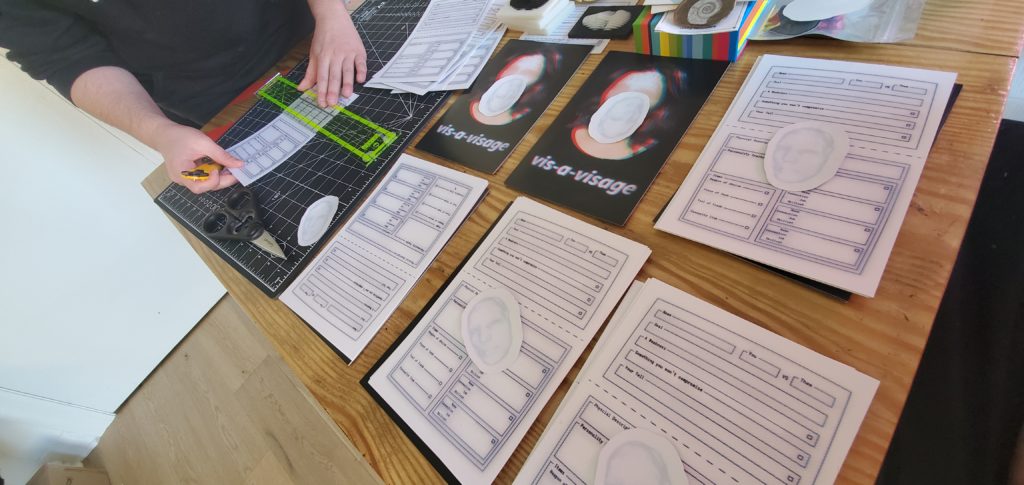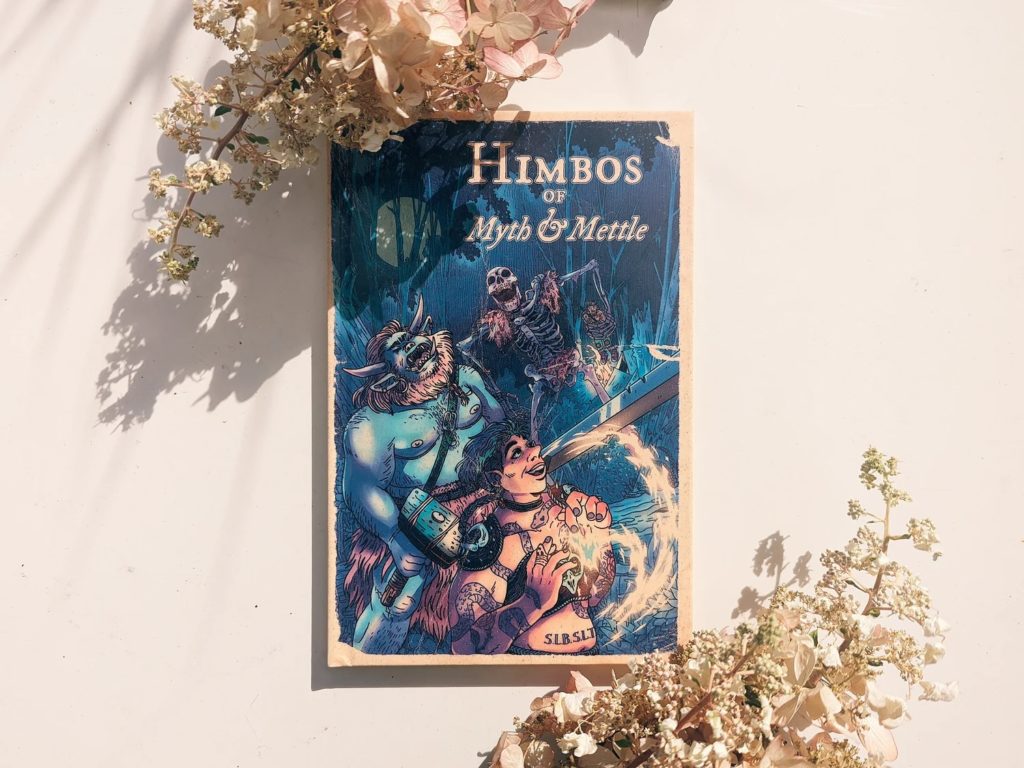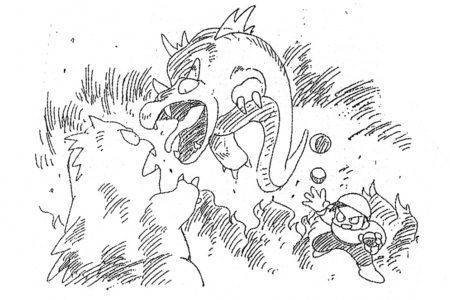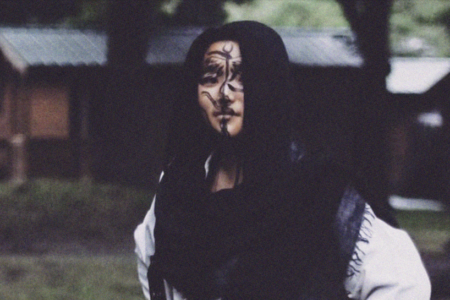
I wrote my first RPG a couple months into the pandemic. I had re-ignited my sci-fi book club since we were all still enthusiastic about remote and safe socialization. S, by Doug Dorst and J.J. Abrams, is one of those clever format books. It’s a novel, yes, but then it is also another story written in the margins of the novel as a conversation between two characters. At some points extra ephemera are inserted into the novel: postcards, newspaper clippings, letters. There’s even a code breaker wheel in the back. Sometimes I find these gimmicks irritating (looking at you House of Leaves), but I really enjoyed my time with S. Every extra element was curated to make me feel as if I had found the singular copy of a marked up tome in some cavernous used bookstore. The entire time I was reading I could not stop thinking “I want to play this.”
If you are reading this and looking for resources on how to make your first TTRPG you have probably already had your own version of this moment.
I love craft. I deeply respect and believe in technical knowledge, theoretical frameworks, research, design practices, and skill development. I also love scrappy weird little broken and failed art projects. I wholeheartedly believe in lived experience being the most important elements of a creative practice and hate the classist and oppressive structure of hierarchical knowledge enforced by the academy. It’s hard out here for a little fat trans who comes from poverty but wishes they could live their days in a salon environment arguing about Art and the meaning of life.
I bring this up because a lot of people who are making RPGs have, somewhere in the back of their lizard brains, an ancient synapse that refuses to let go of the idea of mastery in a creative field. This manifests most commonly in the form of best practices lists, blogs about correct use of bullet points and endless Twitter wars about what is or isn’t the right way to employ a dice roll during play. But we have to figure out how to respect experience without devaluing the genuine brilliance fresh eyes and clear heads bring.
Why am I sharing all this when you thought this article was going to be some cool shortcuts and tools to make an RPG? If you want advice on how to make a best selling RPG product and negotiate your way into a full time career in the cesspit that is this industry, it’s not gonna come from me. If you want help making your scrappy little art game full of weird characters and personal opinions and you think nerding out about systems to help enable your dream kind of play sounds like fun, let’s roll.
1) Be weird, stay weird.
There are, without a doubt, more good TTRPGs in the world than most anyone has time to play. There are even more bad TTRPGs than that. When there is such an abundance of riches within a space the best thing any of us can hope to contribute to it is something different. The easiest way I’ve found for doing this is to go extra hard into the parts of my game that are infused with my personal experience and opinion. This doesn’t necessarily have to be weirdness, but many of the best game projects I’ve seen come from designers leaning hard into their sad (like Batts), disturbing (Wet Grandpa), sexy (Adira), scary (The Wretched), or even toxic (Blood Feud) traits.
2) Mechanics only matter if you want them to.
What is a game, really? Don’t answer that. Many TTRPGs run off the same base system and the creation of a new one can be as simple as skinning parts or the entirety of something already in existence. If the system design side doesn’t interest you or you feel over-whelmed at the thought of design-ing mechanics from scratch, System Reference Documents (SRDs) are here for you. Many designers and companies release SRDs, which are documents that, with varying degrees of designer commentary, outline the basic systems they have designed and the ways in which you can use them for your own games. The most famous of these is without a doubt from Magic: The Gathering makers Wizards of the Coast. However, indie designers have been making the most useful, interesting and inspiring SRDs in the last few years and they are undeniably the perfect starting place for your first foray into design. They comes in all shapes and sizes and can help you make all kinds of games:
*You could make a classic adventure game with Cairn
*You could make a horror themed solo games with Wretched & Alone
*You could make a competitive 2 player game with Vis-a-vis
*You could make a single player game that uses physical activities with Lay on Hands
*You could make a combat heavy video game like game with LUMEN
*You could make almost anything at all with Belonging Outside Belonging
In addition to SRDs, many indie designers (myself included) release their work with open licenses that encourage you to hack their games and ideas into new forms. An incomplete list of good games to hack:
* Cybermetal 2012
* Sledgehammer
* Bloodbeam Badlands
* Himbos of Myth and Mettle
* Apocalypse World
* Lasers & Feelings
3) Playtest! Or, for a level up bonus, playstorm!
The single most useful thing in game design is gathering constructive feedback from people who have actu-ally played the game you are making. Playtesting can feel scary for people who aren’t experienced with it. There’s a misconception that your game should be close to its final shape in order for it to withstand the flurry of criticism. Putting clear guidelines on your playtesting can help with this and be clear about the type of feedback you want.
Are you trying to figure out if one of your combat rolls works how you want it to? Are you trying to see if players all gravitate towards one type of character over another? Are you trying to get feedback on the setting or world of your game? If you make that super clear to anyone you’ve asked for feedback you are less likely to get bogged down in a lot of information you won’t find useful
4) Playstorming is rad AF.
Playstorming is like levelled up playtesting. Chaotic, lawless, hectic. In playtesting you have notes, ideas, mechanics, things to bring to the table and test. In playstorming, you have ideas. Really the boundaries between these two activities is often nonexistent, but playstorming largely lives between brainstorming and playtesting. Playstorming can be hard when new because, in my experience, it’s a little more vulnerable to involve other people in the very early stages of an idea. The flipside is that we come up with solutions to problems and creative design ideas that we never would have if left alone by ourselves. If you want to try out playstorming, grab some friends you trust and a couple ideas, like “I want to make a TTRPG about battle where we use word association to resolve conflict,” or, “What about a solo game about a house-hold from the perspective of a cat?”
5) Engage in the community conversation and resources
The last piece of advice I have for you is the least concrete. The indie TTRPG space is often a hellfire of toxic actors and horrible online behaviour. It’s also extremely welcoming and hugely resourceful for newcomers. There are Discord servers full of designers who love to talk shop and give helpful feedback, a never ending cycle of jams on itch.io where tools and boundaries are provided for people hoping to make their first game. There are Patreons of artists who, often for as little as $1.50/month, release art that can be used in your commercial and creative projects. There are layout guides for your PDFs and templates for your itch page to help ease the difficult space between writing and releasing. There are even grants and mentorship programs for helping new designers make their games (check out the Chapbook Co-op, for example). I have yet to desire for a resource that the TTRPG community has not already made and released somewhere.
So in life, also in RPGs: do the stuff that is fun, let people help with the stuff that is not.
Stay weird.
Maxwell Lander is a gamemaker, photographer, interactive media artist and feminist pornographer. They have been winning awards and exhibiting internationally since 2007. They have released several tabletop roleplaying games, but are most proud of Himbos of Myth & Mettle, a high camp high fantasy game of big bods, and Frame 352, a solo photography game about hunting cryptids. They spend too much time reading old RPG books for the podcast Read the Fucking Manual.



